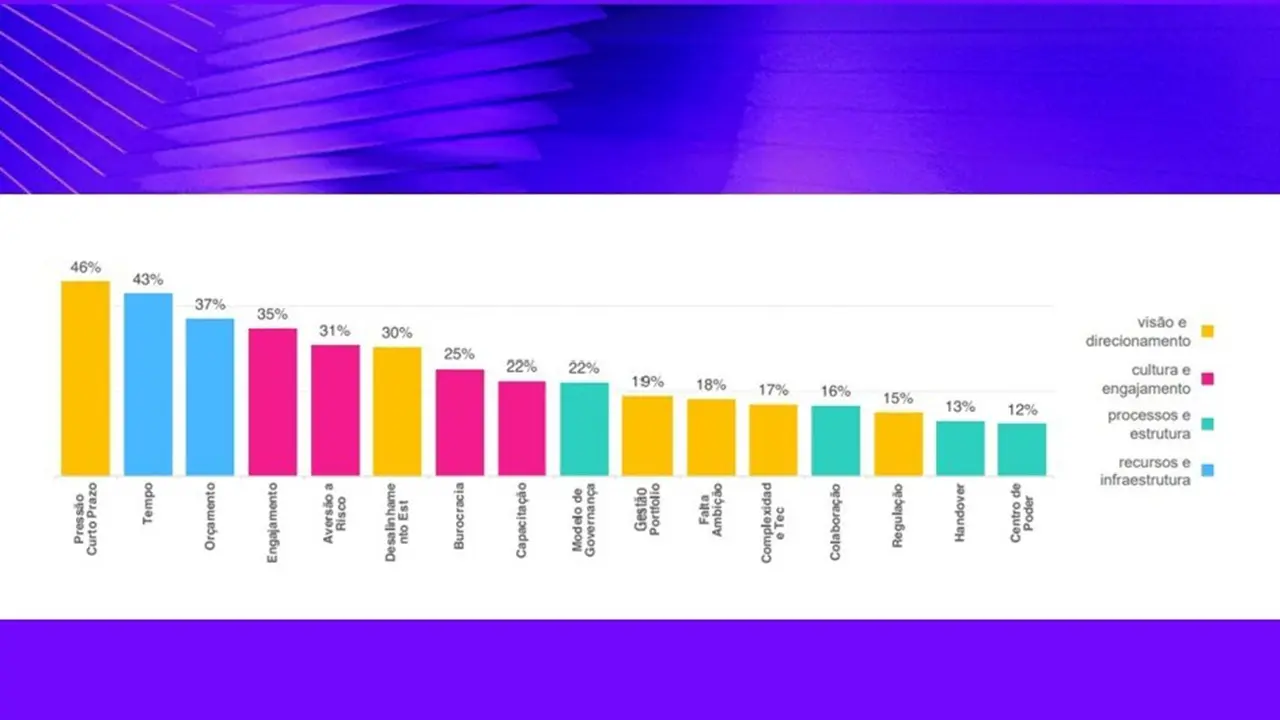
Innovation Challenges in 2025
- Paulo de castro reis
Innovation remains a major competitive advantage, but the obstacles to advancing on this journey are still numerous. The study “The Future of Innovation Management 2025”, by Inventta, reveals the main barriers that hinder the evolution of innovation in companies.
Pressure for short-term results
This is the most frequently cited challenge. The need to deliver immediate results limits room for initiatives that generate more transformative impacts in the medium or long term.
Lack of time and budget
Even when the intention exists, many organizations face resource constraints, both financial and human. The limited time that leadership and teams can dedicate to innovation remains a significant bottleneck.
Engagement and culture
A lack of innovation-oriented culture and fear of taking risks continue to paralyze many companies. In addition, maintaining team engagement in innovation initiatives is a persistent challenge.
Disconnection between strategy and innovation
When innovation is not clearly aligned with the company’s strategy or objectives, it tends to lose relevance and priority in decision-making.
Skills and governance
Insufficient training, weak governance structures, and rigid models also undermine an organization’s ability to innovate consistently.
Complex or poorly defined processes
Internal bureaucracy and lack of clarity around innovation processes hinder agility and limit experimentation.
How to move forward
Overcoming these challenges requires fewer ready-made formulas and more tailored approaches. Companies that are making real progress are those that integrate innovation into their core strategy, focus on disciplined execution, and operate with short learning and continuous improvement cycles.
The secret is not in chasing the next big disruption, but in ensuring that innovation happens in a clear, focused, and consistent way. When innovation stops being an abstract concept and becomes a daily practice, it becomes the driving force that propels companies into the future.






